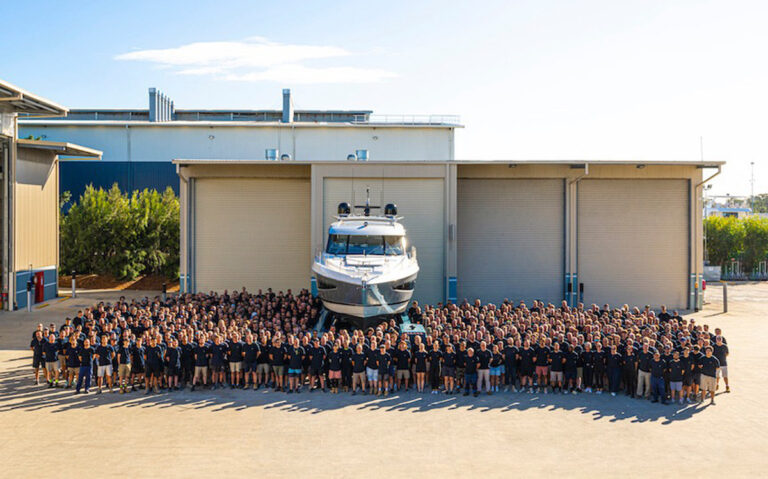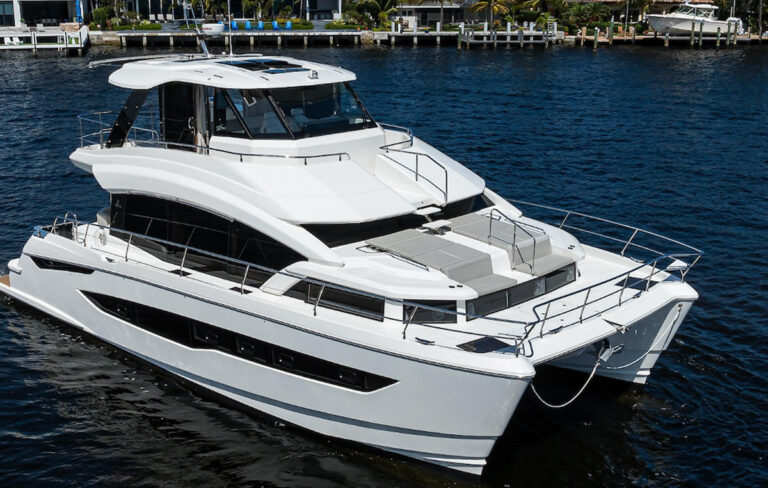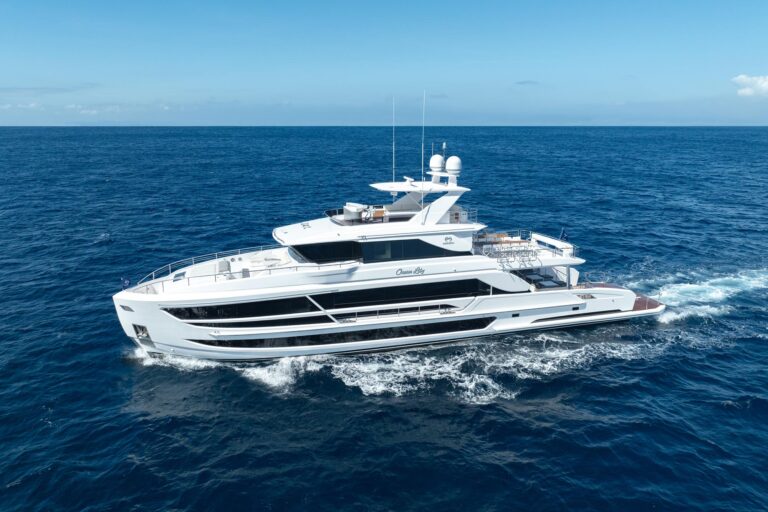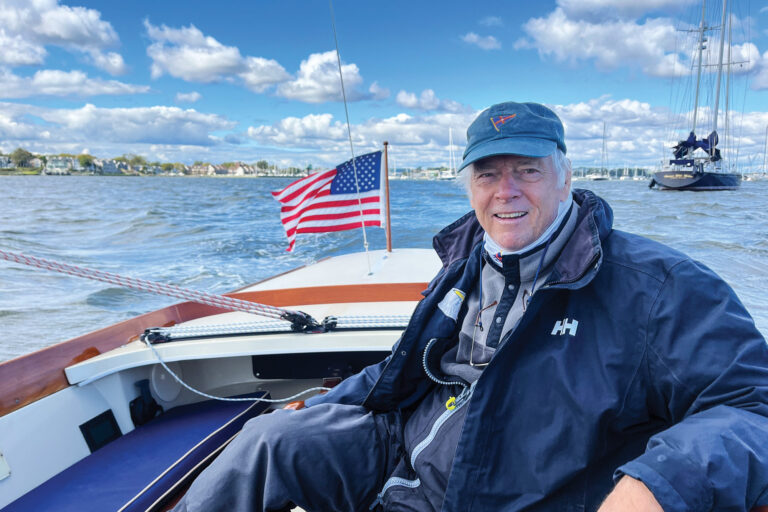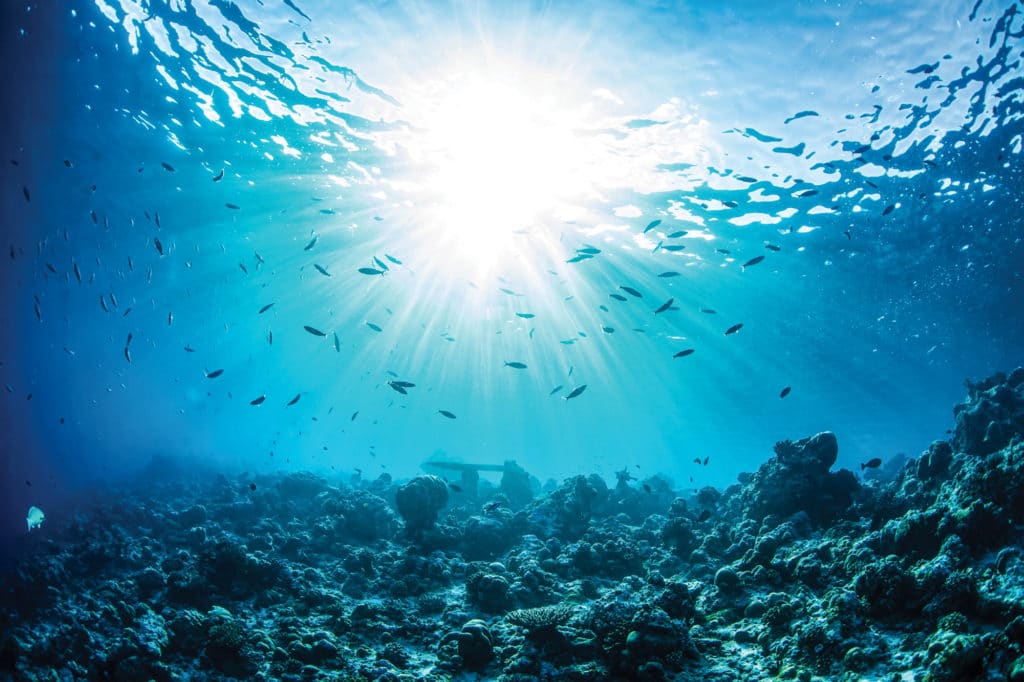
“It’s game-changing,” Capt. Tim Palmer, who operates the Wesmac 46 Easy Wind out of Stuart, Florida, says about his WASSP F3X multibeam sounder. “I grew up in Stuart, and I thought I had the reefs down cold, but WASSP made me realize that I still had a lot to learn.”
Palmer takes Easy Wind to the Northeast to fish for cod, fluke and sea bass in the summers. He reports “mowing the lawn” off Block Island, Rhode Island, with his WASSP over the wreck of the USS Bass, a Barracuda-class submarine that was scuttled in 1945. “I measured the two pieces and added it up,” he says. “And it was almost identical to the information on [the] Wikipedia page. WASSP is incredibly accurate.”
Fish finders arrived in the 1950s as simple instruments that, over time, became increasingly sophisticated in their object-detection capabilities, transmission schemes, transducer technology, supporting software and networking capabilities. While today’s chirp fish finders help anglers get on the fish, the latest WASSP multibeam systems—the F3X and F3XL—deliver significantly better seafloor and water-column imagery than recreational sounders.
Today’s tech also has 12 times more transmitting power than WASSP’s previous fishing-specific setup. This extra power helps anglers reach deeper depths and capture more information, and it’s useful for punching through noise aboard boats with complex acoustic systems.
WASSP—or wide-angle sonar seafloor profiler—was started by Electronic Navigation Ltd. in 2000. The Auckland, New Zealand-based company wanted a cost-effective product in the lineup between single-beam sonar and commercial multibeam systems. The first multibeam fishing product arrived in 2006. After Furuno Japan acquired an initial stake in the company, it began worldwide distribution with Furuno in 2011. In 2015, the F3 system was unveiled (see “Furuno’s WASSP Sonar Put Fish in the Spotlight,” June 2018).
Since then, Electronic Navigation Ltd. has continued to develop the WASSP platform. It has created the higher-power F3X and F3XL systems, as well as the WMB-80 transducer, a low-frequency transducer that lets anglers study the water column and bottom from 7 to 3,281 feet.
All WASSP transducers employ a phased-array design with 112 piezoceramic elements (see “Ceramics Class,” May 2022) that deliver 224 discrete sonar beams. Each beam creates sonar cones that measure 3.2 degrees (fore and aft) by 4 degrees (athwartships), and that emit 40 synchronous chirp transmissions per second.
“Multibeam gives you, amongst other things, the benefit of both a narrow-cone single-beam sounder and a wide-cone single-beam sounder,” says Rufus Whiteford, Electronic Navigation Ltd.’s WASSP sales and marketing manager. “In a narrow-cone single-beam transducer, you might get to an 8-degree—quite a narrow-beam—cone, and that gives you really nice high definition and detail, but you miss out on huge amounts of coverage. With multibeam—imagine 224 of these even narrower beams—and you get full coverage of the seafloor, a 120-degree swath.”
It all equates to a 60-degree view on each side of the keel and 4 degrees fore and aft. WASSP multibeam sonars also can deliver seafloor coverage and detailed mapping that’s up to 3.5 times the water depth, while revealing similar (or better) detail levels than single-beam narrow-cone transducers produce.
The WASSP F3X and F3XL multibeam-sonar systems consist of a transducer networked to a DRX-46 black-box processor, which has 2.5 kW of transmitting power (for comparison, the standard F3 system uses the DRX-32 processor with 1 kW of transmitting power). The DRX-46 is networked to a satellite compass and an inertial navigation system that provides azimuth information and removes the influence of pitch, roll and heave over the transducer’s 224 sonar beams. It’s also networked to a Windows-based PC.
“The display happens on a PC,” Whiteford says, adding that the personal computer is often running Timezero’s TZ Professional or some other navigation software. “The actual display that you’re looking at can be a cheap office display, or it can be a fully marinized, Furuno-marinized display.”
Another option is to network the PC to a 16- or 19-inch Furuno TZtouch3 multifunction display, which serves as a fully marinized screen.
While F3X and F3XL systems both employ DRX-46 processors, F3X systems are spec’d with WMB-160 transducers, and F3XLs uses WMB-80 transducers. Both allow for similar onscreen resolution. WMB-160s transmit at a center default setting of 160 kHz (user-selectable from 120 to 200 kHz with a chirp range that’s plus or minus 30 degrees of center) and have a range of 3 to 1,970 feet. WMB-80s transmit at a center default setting of 80 kHz (selectable from 60 to 100 kHz with a chirp range that’s plus or minus 20 degrees of center) and can ping to 3,280 feet.
“You choose transducers based on the depth of the water that you’re fishing and ease of installation,” Whiteford says.
This is a change for anglers who are used to fishing with a dual-frequency transducer that chirps over high- and low-frequency sweeps. Dual-frequency WASSP awareness can be achieved, Whiteford says, but it needs two transducers and two dedicated black-box processors (a DRX-46 and WMB-160 run $28,000, while a DRX-46 and WMB-80 fetches $37,100).
In any setup, WASSP users can expect a wealth of underkeel awareness. It can include backscatter (seafloor density), water-column targets (mapped relative to their GPS position) and side-scan perspectives.
“It’s as much about building a habitat picture as it is seeing individual fish,” Whiteford says. “Every WASSP user creates user-generated cartography…usually significantly higher resolution than government charts.”
Users have software options for controlling and viewing WASSP data. Electronic Navigation Ltd.’s CDX control software operates on a Navionics background; however, users can upgrade to Timezero software for bespoke, user-generated cartography that can be stored locally—including live, high-resolution seafloor maps.
“Users can completely control WASSP with TZ Professional,” Whiteford says, adding that roughly 75 percent of WASSP users use TZ Professional. “It brings all of the data into one place.”
It’s not surprising that the equipment is aimed at the commercial-fishing and high-end sport-fishing markets; however, Whiteford says, “it’s viable to fit WASSP on a 35- to 40-foot center-console.”
If you want some of the best underwater acoustics for fish-finding, seafloor study and creating angling-specific user-generated content, the F3X and F3XL systems could help you ping the pelagic zone or precisely measure long-scuttled submarines.
Remote Monitoring
Superyachts aren’t WASSP’s primary audience, but some crews use multibeam technology. “Superyachts sometimes navigate to unfamiliar ports for lunch,” says Rufus Whiteford. “So, they put a WASSP on the tender with a live feed to the superyacht.” This setup gives captains hyper-accurate cartography and helps to ensure navigational safety.





